Strawberry variety Lord
Lord is a non-repairable variety of garden strawberries (strawberries) of medium late ripening. Its origin is vague, according to some sources, it was bred by English breeders and appeared in Russia in about the 80s. Someone considers it the result of amateur selection, some sources claim that the modern Lord is a descendant of the "original", improved by the works of Russian scientists. Despite its age and unknown origin, this strawberry is in great demand among gardeners. It is unpretentious, high-yielding, does not require abundant feeding, endures various weather disasters, is famous for its large-fruited, as well as good taste and presentation of berries.
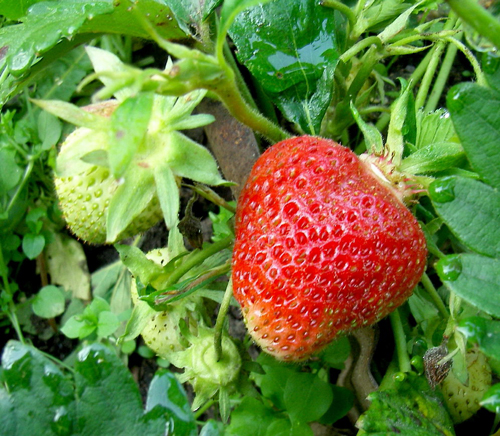
Plants are vigorous, erect, about 50-60 cm high, abundantly leafy. Periodicity is average, gradually decreasing as the plants grow older. The leaves are large, corrugated, light green in color. Peduncles are strong, but under the weight of the harvest they are laid on the ground.
The Lord's berries are large, wide-conical in shape, flattened on the sides. The skin is bright red, dark red when fully ripe. Achenes are yellow. The pulp is from pale pink to bright red, dense, juicy, with a pronounced aroma. A characteristic feature of the variety is the presence of voids inside the fruit, which is why the seemingly huge berries can have an incomparably small mass. It is worth saying that this nuance is really an invariable feature of the variety, and high-quality agricultural technology will not help get rid of it.
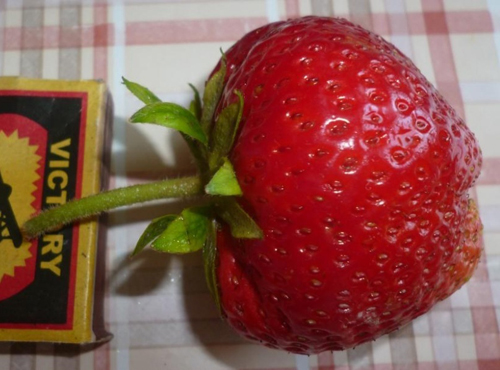
The strawberry taste is predominantly sweet, with pronounced notes of sourness, which gracefully emphasize the sugar content. The pulp, although dense, is very tender and pleasant, without an apple crunch when bitten. In general, Lord does not belong to the hard-fruited species, but he tolerates transportation perfectly. The berries have an excellent presentation, after picking they remain dry and attractive, they do not flow during transportation. The fruits are versatile in use, they are especially good fresh, they are also suitable for any kind of processing, including perfect for canning and making jam. They are also good for frozen storage.

The average weight of berries in the season is 30-35 grams, there are specimens and more than 100 grams, but this phenomenon is very rare. Fruiting begins around late June-early July and lasts quite a long time - 3-4 weeks. The berries do not tend to become smaller by the end of the season, but still slightly decrease in size. The yield is high, averaging 1 kg per plant. Some nurseries claim figures of 3 kg per bush, but this figure is very controversial and it is unlikely that it is real. Still, the variety is not repaired, moreover, at present it is mainly grown only in household plots, so it is most likely impossible to "squeeze" 3 kg of berries out of the plant with moderate agricultural technology (without abundant "feeding" and strict control over the growing conditions). Or maybe you can do it, who knows?
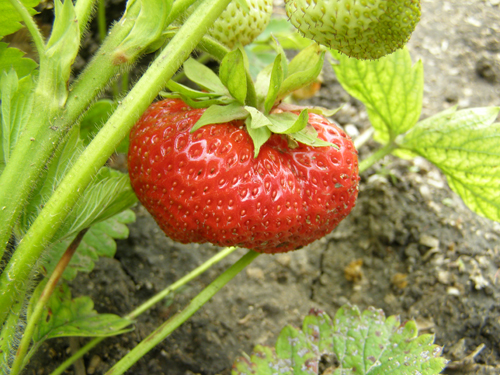
The lord is distinguished by good winter hardiness, he is able to survive even a harsh winter with little snow. According to gardeners, young plants are able to tolerate winter frosts at -40 ° C well and without loss with a small amount of snow. Frost resistance in strawberries is average, so it is advisable to take care of planting shelters in the spring. What the variety can safely boast of is drought resistance. Even in extremely dry seasons, it is able to give consistently good yields, while the taste of the berries will remain at a decent level. However, in this case, the voids inside the fruit may increase, and this will be a big cause for frustration, therefore it is better to provide the plants with regular watering.
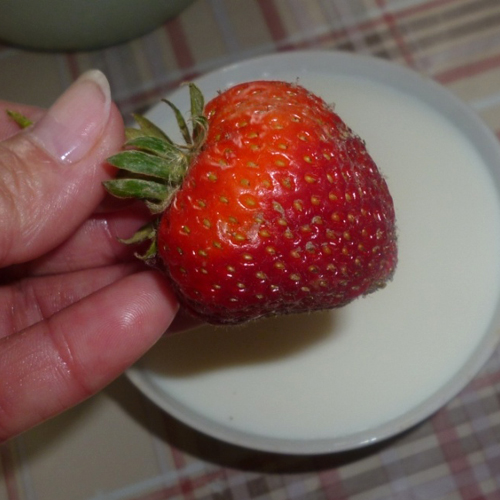
Strawberries have a very weak resistance to fungal diseases, especially to gray rot, and are often affected by various spots.In rainy seasons, most likely, you will not do without the use of chemicals. In favorable periods, timely preventive treatments are also extremely important, in this case it is possible to do with folk remedies.
One of the Lord's main virtues is his longevity. According to gardeners, plants do not lose varietal characteristics for 7 years and all this time they are able to bear fruit at a high level. At present, such an indicator can be called impressive, since the abundance of modern popular varieties of strawberries are not able to “live” so much without reducing the yield. Now the maximum life of plants is 4 years, and commercial varieties do not last more than two years, and often rejuvenation is required after one year of cultivation. Thus, our hero in this regard bypasses a huge variety of other varieties. For gardeners, such longevity is an undoubted advantage, and it is valued along with the good taste of berries and the unpretentiousness of plants.
In agricultural technology, strawberries are quite simple, do not require increased attention to themselves and do not need to create special growing conditions. Care consists in carrying out the most standard measures, such as loosening the soil, weeding, watering and feeding, preventive treatments against diseases and pests. The Lord does not need an excessive amount of fertilizer, which also makes him very attractive among the abundance of other varieties that require constant abundant feeding. But our hero will respond well to all your efforts, so the more energy you spend on him, the more you can expect from him. By the way, there is evidence that in the southern regions strawberries show remontability - they begin to bloom for the second time, around the beginning of September. Under favorable conditions, if a cold snap does not come, it is even possible to obtain a second harvest, but it will be insignificant.
It's time to take stock. This variety, despite the huge number of others, more modern, is very popular. It can be grown in a wide variety of climatic latitudes, is very unpretentious and quite harvestable. Gardeners like Lord very much for their stability and reliability, even in adverse weather conditions of the season, he gives good yields, while other varieties do not withstand such disasters. The excellent taste of berries, their ability to tolerate transportation and suitability for short-term storage - all this is also included in the piggy bank of our hero's merits.
But this strawberry also has drawbacks that make gardeners think about buying something more modern and more interesting. Firstly, plants are weakly resistant to fungal diseases, which implies the almost obligatory use of chemicals, and gardeners do not particularly like this. Secondly, the characteristic voids inside the berries do not add individuality to the variety, but, on the contrary, make it less attractive against the background of other varieties. Thirdly, the Lord was withdrawn a long time ago and can no longer meet modern requirements. Its yield, of course, is good, but not outstanding, which is why farmers and large agricultural firms practically do not grow it.
Thus, if you are looking for strawberries for commercial cultivation, it is better to look at the higher yielding varieties. The yield indicators that nurseries promise are often simply unattainable, no matter how many plants you feed and how you care for them. And if you want to settle strawberries on your plot, which do not require a lot of care and which will delight you with a stable tasty harvest for many years, then Lord is a very good choice.

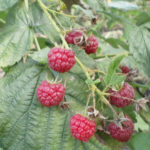
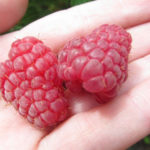

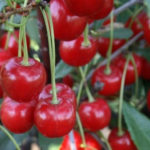
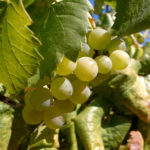



This strawberry variety requires a lot of space and sun, this must be taken into account if you decide to plant it. The bush is high, spreading, gives a lot of mustache. I cut them off every few days. The mustache takes root perfectly in a new place. It blooms profusely and it is better to tie up the bush during the ripening period. Loves soil closer to neutral pH, moisture. During the ripening period, the soil should be slightly damp, otherwise the berries will become very sour. It is better if from spring to cover the soil with newspapers or pine needles. We mulch with needles, because we have a pine forest not far from the village. The berries are large enough, sweet and sour with a pleasant aroma. They make a delicious aromatic compote. Fruiting well. This year, the bushes were attacked by powdery mildew - they were sprayed with Bordeaux mixture. It helped. I change landing site every three years.